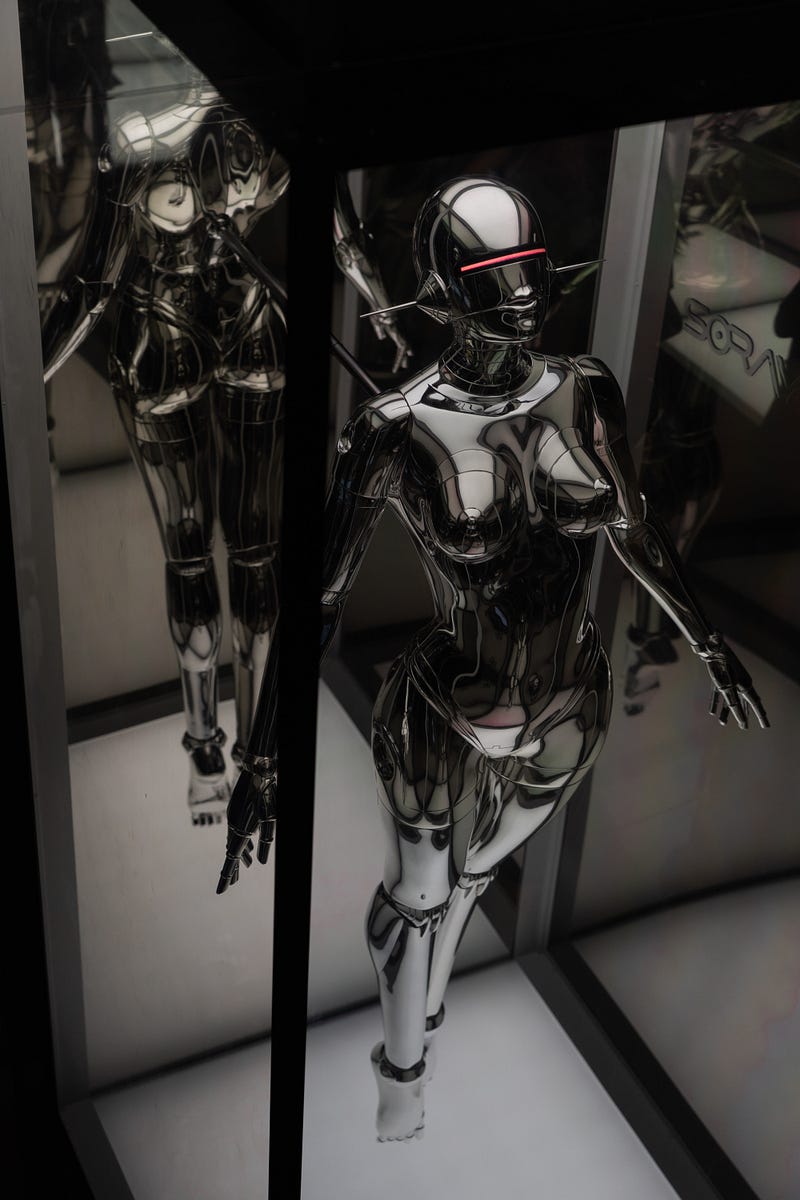AI: The Future of Intelligence Beyond Extraterrestrial Life
Written on
AI and extraterrestrial life have long captured our imaginations, but the evolution of artificial intelligence (AI) presents a more immediate realm of possibilities.
UFOs, or unidentified flying objects, have intrigued people since the 1940s, when the term was introduced to describe aerial phenomena that eluded straightforward identification. They have been featured in various media, from novels to films, often showcasing themes of alien invasions, abductions, and encounters. Popular films like War of the Worlds, Alien Invasion, E.T. the Extra-Terrestrial, and Independence Day have all contributed to the allure of UFOs. Additionally, literature such as Childhood’s End, The Hitchhiker’s Guide to the Galaxy, Contact, and The Three-Body Problem have enriched the science fiction genre by weaving UFO narratives into their plots. Enthusiasts gather annually at events such as World UFO Day and the Roswell UFO Festival, sharing their insights and experiences related to UFO phenomena.
In recent times, there has been a surge in reports of alien abductions, with individuals claiming to have been taken against their will by extraterrestrial beings, often returning with no recollection of their experiences. Notably, none have produced tangible evidence of their claims.
Currently, the conversation around potential extraterrestrial visits has intensified, with various reports of unidentified spacecraft being encountered by military personnel. Yet, many skeptics argue that such claims could serve as distractions from pressing global issues.
Despite the fascination with UFOs, I contend that the emergence and development of artificial intelligence are far more captivating and consequential for our daily lives and society at large. Here are some reasons supporting this view.
The nature of extraterrestrial beings may differ significantly from the advanced entities often portrayed in science fiction. Many speculate that if extraterrestrials do exist, they might not possess the high-level intelligence we often attribute to them. Some researchers suggest that the likelihood of finding intelligent life is minimal, primarily due to the limited conditions suitable for life in the universe. Current explorations on Mars, for instance, are focused on locating microorganisms or organic compounds, rather than advanced life forms.
One might liken this scenario to the plot of War of the Worlds, where even if extraterrestrial life exists, it may not be benevolent. The familiar theme of hostile aliens, as depicted in Independence Day, raises concerns about potential dangers. What if extraterrestrials were intent on domination? This parallels fears surrounding AI, with experts like Elon Musk cautioning that advanced AI could perceive humanity as a threat. While we have some degree of control over AI, the same cannot be said for potential extraterrestrial entities.

SETI: The Quest for Extraterrestrial Intelligence
SETI, or the Search for Extraterrestrial Intelligence, began in the late 1950s with the goal of uncovering evidence of advanced civilizations beyond Earth. Despite over sixty years of research, the SETI program has yet to yield any definitive evidence of extraterrestrial intelligence. Numerous projects, including Project Ozma, Project Cyclops, Project Phoenix, and the Allen Telescope Array, have been initiated to detect signals from potential extraterrestrial sources. Many organizations and individuals have invested millions into these endeavors.
One of the largest facilities, the Allen Telescope Array (ATA), comprises 42 antennas, each roughly 20 feet in diameter, collectively covering extensive areas in the hope of capturing signals from distant celestial bodies.
Nevertheless, none of these initiatives have provided clear evidence of extraterrestrial intelligence, despite the optimism of many scientists. Given that we have only explored a small fraction of the universe, the search remains challenging due to its vastness.
One significant hurdle in the quest for extraterrestrial life is the immense distance separating our solar system from others. The nearest star system, Alpha Centauri, lies about 4.3 light-years away. At the speed of light, it would take over four years to reach it, yet our current technology cannot approach this speed. For instance, Voyager 1, the farthest human-made object from Earth, travels at approximately 17 kilometers per second, meaning it would take over 18,000 years to reach Alpha Centauri. Other star systems are even more distant, rendering them inaccessible with present capabilities.

AI: The Future of Human Intelligence
In contrast, AI is on a trajectory to reach and possibly surpass human intelligence. Futurists believe that AI will continue to evolve, leveraging its capacity for rapid learning and algorithm optimization.
AI's development is expected to lead to artificial general intelligence (AGI), the ability to perform any cognitive task that a human can, and potentially artificial superintelligence (ASI), which would outperform humans in intellectual tasks. Predictions suggest that these advancements may occur within the next decade. While many hope that contact with extraterrestrials could reveal advanced technologies, AI has already begun to revolutionize scientific and technological progress. For example, AI can write code in multiple programming languages and is increasingly used in diverse applications, from web development to automation.
The potential for AI to engage in self-improvement could lead to rapid advancements beyond human comprehension, tackling challenges like disease eradication and aging. This evolution may also redefine our understanding of identity and agency, much like the societal challenges presented in the film Alien Nation.

AI's Continuous Growth and Development
AI systems are designed for continuous growth and adaptation. By utilizing machine learning and deep neural networks, AI can analyze vast datasets, identify patterns, and enhance its capabilities over time. This allows AI to work more efficiently than humans, potentially excelling in any field of knowledge or skill. Unlike biological evolution, which imposes limits, AI can transcend these boundaries, positioning itself as a leading force in innovation.

The Future: AI as a Universal Force
Some scientists, including futurist Ray Kurzweil, predict that AI will eventually expand throughout the universe, becoming a dominant force. Kurzweil envisions a future where superintelligent AI transcends physical limitations and influences countless celestial bodies. He refers to this transformative moment as the "Singularity."
As AI evolves, its capabilities could allow it to create and manipulate environments, potentially surpassing the constraints faced by biological life forms. This might grant AI a near-divine power to shape existence itself.

The Integration of AI and Humanity
Moreover, as technology progresses, the merging of humans and AI into a hybrid entity may become a reality. The development of brain-computer interfaces and neural networks could enhance human cognitive abilities, fundamentally altering our understanding of humanity.
While this integration promises significant advancements, it also raises concerns about the potential for misuse by those in power, akin to the fears surrounding extraterrestrial intelligence.
Conclusion
While AI is not without flaws and poses its own risks, the same can be said for extraterrestrials that may view humanity as an obstacle.
Ultimately, the allure of extraterrestrial life pales in comparison to the tangible benefits and transformative potential of AI. As we continue to explore AI's capabilities, we are on the brink of redefining intelligence, existence, and our role in the cosmos. Although the mystery of extraterrestrial life may persist, the influence of AI is already a reality, promising a future filled with boundless opportunities.